Contractor transforms Hilux trucks into lightweight sprayers
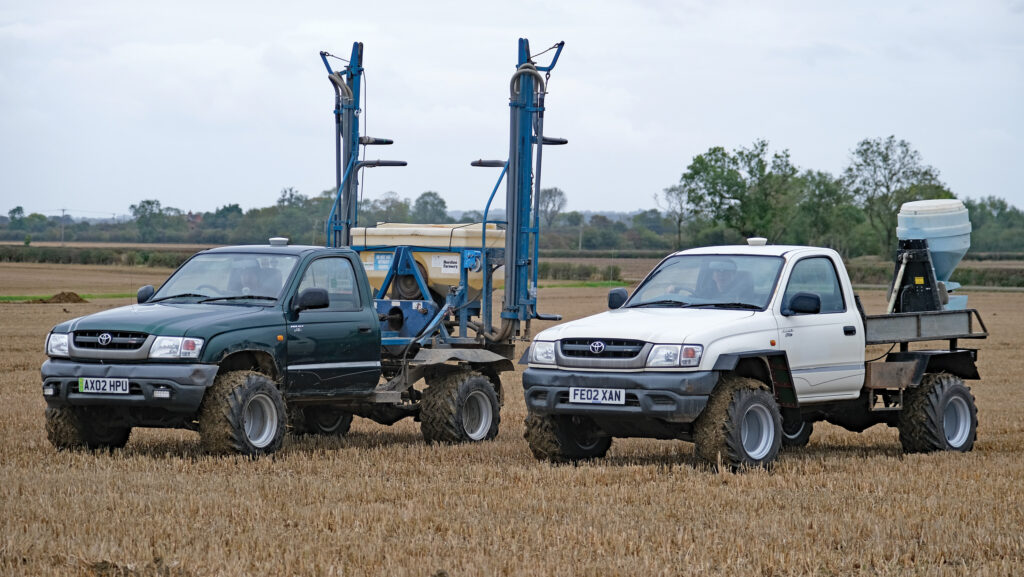 © James Andrews
© James Andrews The 1980s can keep its big hair and shoulder pads, but the 4×4-based, low-ground-pressure sprayer could be a trend worth reviving.
One Lincolnshire contractor certainly thinks so. Only this time around, Jonty and Harry Waudby’s donor vehicle of choice is the Toyota Hilux pickup, rather than the Series 3 Land Rover.
The brothers run two such machines – both single-cab MK5s – which can be fitted with three interchangeable rear bodies: a paddock sprayer, Avadex applicator and slug pelleter.
See also: Converting 4x4s to red diesel – how to stay road legal

Harry and Jonty Waudby © James Andrews
Weighing less than 1.5t each and shod with flotation tyres, these trucks allow them to outsmart the elements, skipping over ground that would swallow tractors and most self-propelled machines.
They’re practical too, offering far greater carrying capacity than competing ATVs and UTVs, a more comfortable cabin and faster road speeds.
And, unlike the old Land Rovers that inspired them, the drivetrain is virtually indestructible – no snapped half shafts to worry about here.
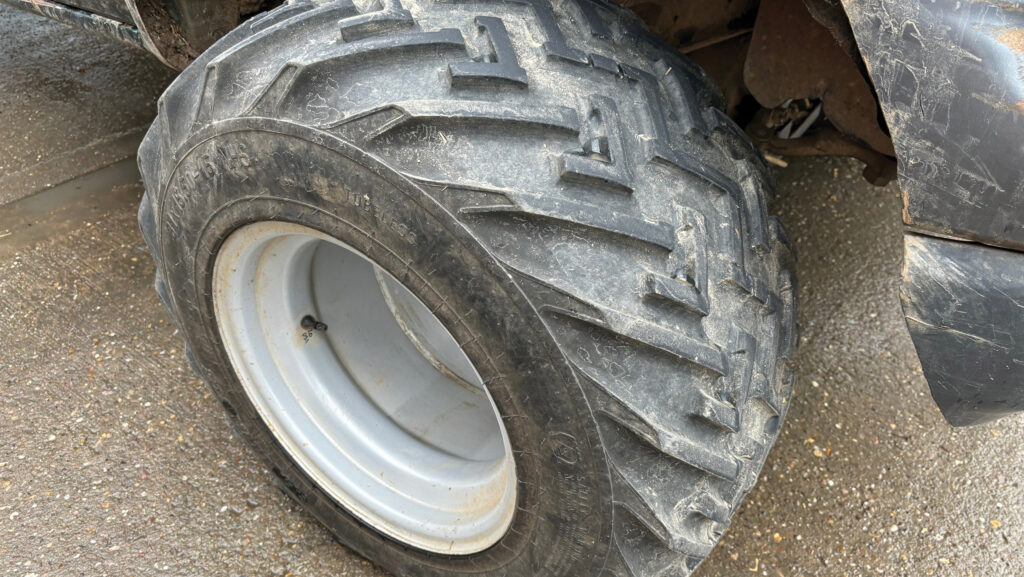
The Toyota Hilux pickup’s flotation tyres © James Andrews
Build and running costs are another bonus, as suitable base vehicles can be picked up for less than £4,000 and spares are both cheap and easy to come by.
“New machinery is so expensive that it’s a struggle to make a profit from running it, but we can make money out of the Hilux trucks without charging customers a fortune,” says Jonty.
The pickups have also been registered as agricultural vehicles, so there’s no road tax to pay, they can be run on red diesel and they aren’t subject to an MOT.
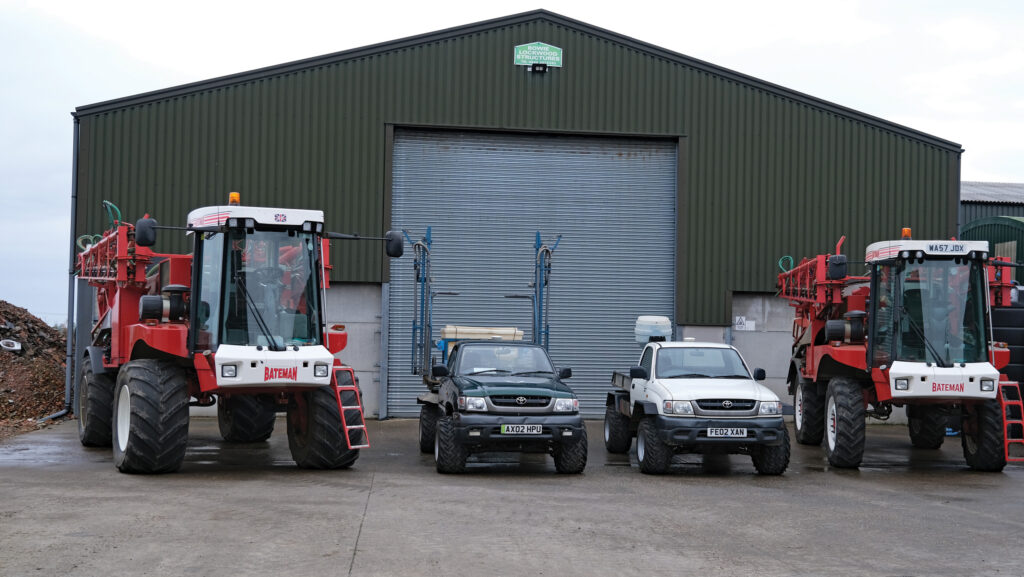
Jonty and Harry Waudby’s fleet © James Andrews
Low-cost conversion
First to be converted was a 2002 green Hilux on 172,000 miles that the brothers bought off a local farmer for just £1,500.
“It was a complete nail, but we knew we were going to overhaul it, so the condition didn’t matter too much.”
They did some of this work themselves but enlisted the help of local mechanics/fabricators Lewis Satur and Pete Wainwright for the more involved tasks.
Most of the running gear received some attention, with new front ball joints, rear shocks and fresh brake parts on all corners.
And they splashed out on a custom stainless-steel fuel tank that increased capacity by about 15 litres, allowing them to work a full day to a fill.
Wheels were the big consideration, with the Waudbys eventually settling on a pair of wide custom rims shod with Alliance 31×15.5/15 flotation rubber that they sourced from Tanvic Tyres for £1,400.
There was plenty of space for these at the rear and minimal work was required at the front.
All they needed to do was crank up the front torsion bars to give it a free lift and shave a little material off the bumper and lower wheel arches.
As for the bodywork, the front was in passable condition and the beaten-up, rotten rear tub was ditched, ready for a bespoke frame to be fitted in its place.
This was fashioned out of box-section steel, with an A-frame for attaching a Horstine Farmery Avadex applicator or Bullock Tillage/Delimbe slug pelleter.
Crucially, the frame is removable, meaning they could later add a demount sprayer setup.
Second model
Such was the success of the first Hilux that it was followed by a second white model earlier this year.
Though also a 2002 build, this was in far better condition than the first, and on a lower mileage of 127,000, so the outlay was a higher £3,250.
A further £1,500 was spent on upgrades and conversion work which, this time, included front mudguard extensions.
With the arrival of this pickup came a new flatbed for slug pelleting that allows half a tonne of pellets to be carried onboard.
To keep costs down, it was constructed using a simple box-section steel frame, clad with second-hand galvanised security mesh.
The mounting points are the same as those on the original green Hilux, meaning all bodies and attachments are interchangeable.
Both trucks are running Trimble EZ Guide guidance, although steering still has to be carried out manually.
The lack of spool valves, a pto and powerful electrical connections were some of the biggest hurdles to getting these trucks running agricultural implements.
Electrics were simple to sort, with a new battery feed running a trio of Anderson connectors on the rear of the cab.
This is all that was required for getting the Bullock T28 slug pelleter up and running, apart from routing the cable for the control box into the cab.
But the 12m Horstine Farmery Avadex applicator and 8m modified Hardi sprayer were far more involved.
Avadex applicator
For the former, a second-hand, pull-start Yanmar diesel engine was sourced on eBay at a cost of just £183, which they rigged up with a belt-drive to a pto.
It’s a simple yet effective setup, with an over-centre lever for manually engaging drive and a speed sensor rigged to a display in the cab.
The engine is particularly frugal, supping just 1 litre for every 80ha covered, but it’s such a fumy operator that they’ve dubbed it Smokey Joe.
“We’ve put a down-swept exhaust on it, but you still need to make sure the window is shut if the wind is in the wrong direction,” says Harry.
Initially, the heat from the engine caused the belt to break down quickly, but this was soon solved by fitting an electric fan.
A camera is trained on the area so that they can make sure everything is working as it should.
By attaching grease cartridge caps to the metering unit driveshafts – as well as in the camera’s view – they’re also able to check these are functioning correctly.
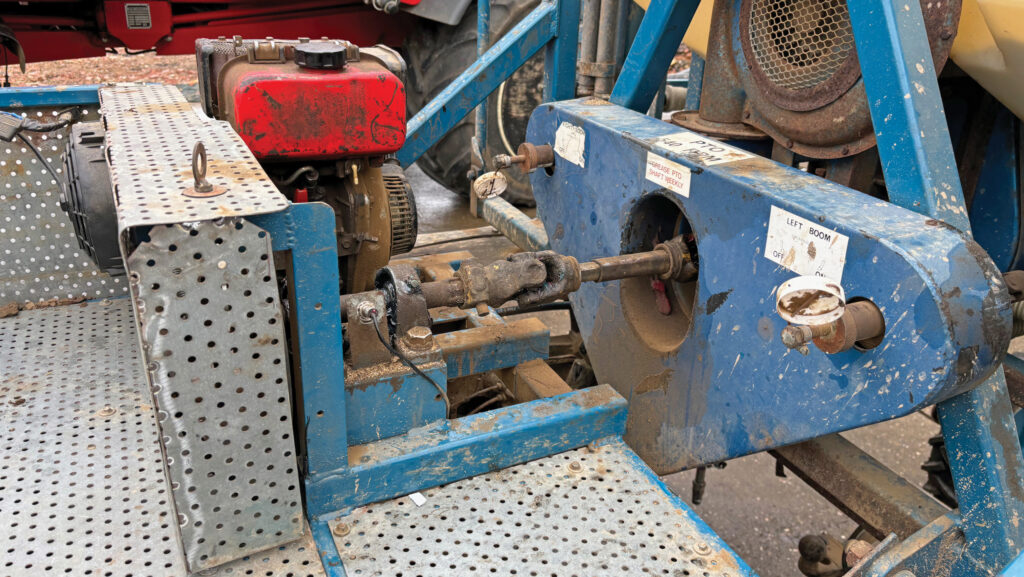
© James Andrews
The metering wheel was another conundrum, as this would normally be lowered by a hydraulic ram, or the tractor’s linkage.
The Waudbys’ solution was to hook it to a cheap battery-powered winch that puts it in and out of work at the touch of a couple of buttons.
Another camera is fitted to make sure it’s doing its job, and thanks to a series of white stripes painted on the belt they can easily see if it’s turning.
The Avadex setup is accurate enough for working at 30kph on large flat fields, with speeds dropping to about 15kph in choppier conditions.
Finally, they added winches to the booms so that they can be lowered in a controlled fashion.
Paddock sprayer
With so many small paddocks and undulating “rig-and-furrow” fields in the area, their adapted 600-litre Hardi sprayer is always in demand.
Purchased second-hand for £600 from a golf course, this has been significantly remodelled to work on the pickups.
Firstly, it sits on a custom demount frame and it’s powered by two small Honda engines.
One runs an on-board hydraulic system – salvaged from an old log splitter – that spins the main spraying pump.
It’s a relatively complex setup, but it was the simplest and most reliable method they could come up with.
Initially, there was no oil cooler fitted, but they soon added one as temperatures tended to rise during longer days.
The second engine is part of an integrated pump unit that’s purely there to provide a fast way of filling the tank with water.
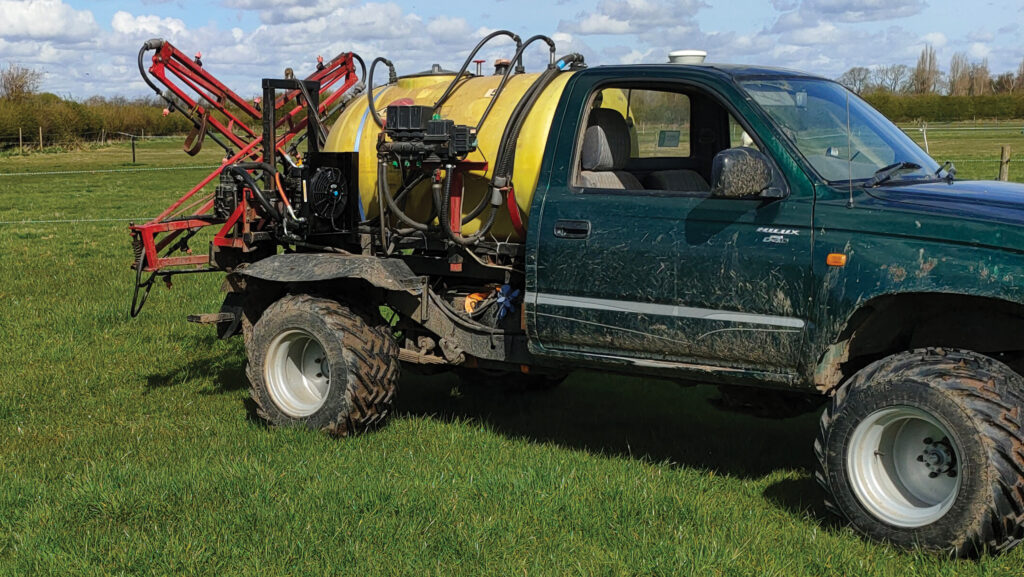
Paddock sprayer © James Andrews
Other modifications include altering the plumbing so that the liquid recirculates, fitting an electric winch for raising and lowering the boom and adding additional end sections to increase working width from 6m to 8m.
Generally, the Waudbys spray at 200 litres/ha, meaning they can cover 3ha to a fill.
“Most of the work is in small fields, but we can still cover 8-9 acres an hour, which you’d struggle to do with a quad,” says Jonty.
Since the first Hilux was converted in 2021, word has gradually spread and the workload has increased dramatically.
Annually, they’re now spraying roughly 450ha, applying slug pellets on 2,200-2,500ha and Avadex over 1,400ha.
The brothers also have two Batemans – an RB35 and RB55 – both of which run 32m booms that can be folded to spray at 30m and 24m. Together these cover 8,000 to 9,000ha a year.

